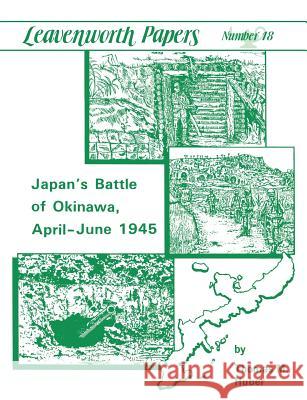Japan's Battle of Okinawa (Leavenworth Papers series No.18) » książka
Japan's Battle of Okinawa (Leavenworth Papers series No.18)
ISBN-13: 9781780394305 / Angielski / Miękka / 2011 / 158 str.
Originally published in 1990 by the U.S. Army Combat Studies Institute. From April to June 1945, U.S. and Imperial Japanese Army (lJA) forces fought fiercely for control of the island of Okinawa. The Japanese Imperial General Headquarters (IGHO) had determined after U.S. strikes on Truk in February 1944 that sooner or later the Americans would seize Okinawa as a forward base for the invasion of Japan. The IJA 32d Army was established on Okinawa in March 1944 to forestall this eventuality and immediately faced the challenge of how to deal not only with superior numbers of U.S. troops but also with overwhelming American firepower by air, land, and sea. The 32d Army's innovative staff had one year in which to invent and implement a new form of underground warfare that would be proof against the Americans' abundant bombs and tanks. Their methods were devised in the field in defiance both of the IJA's traditional light infantry doctrine and of IGHO's preoccupation with air power.
Originally published in 1990 by the U.S. Army Combat Studies Institute. From April to June 1945, U.S. and Imperial Japanese Army (lJA) forces fought fiercely for control of the island of Okinawa. The Japanese Imperial General Headquarters (IGHO) had determined after U.S. strikes on Truk in February 1944 that sooner or later the Americans would seize Okinawa as a forward base for the invasion of Japan. The IJA 32d Army was established on Okinawa in March 1944 to forestall this eventuality and immediately faced the challenge of how to deal not only with superior numbers of U.S. troops but also with overwhelming American firepower by air, land, and sea. The 32d Armys innovative staff had one year in which to invent and implement a new form of underground warfare that would be proof against the Americans abundant bombs and tanks. Their methods were devised in the field in defiance both of the IJAs traditional light infantry doctrine and of IGHOs preoccupation with air power.











